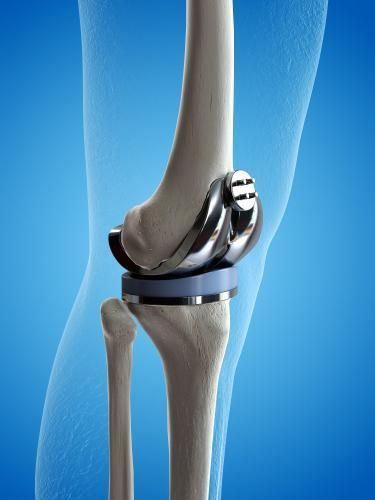Pubalgia (Or Sports Hernia)
November 21, 2020
Pubalgia is a chronic condition where there is an imbalance of the adductor and abdominal muscles at the pubis, that leads to an increase of the weakness of the posterior wall of the groin. This imbalance leads to a deep groin pain. Complete tearing or displacement can occur unilaterally or across the midline to the other side.
Management with Exercise:
- Rehabilitation with physical therapy is first-line treatment for most patients with athletic pubalgia. Recovery considerations include: Severity of the injury since onset, physical condition activity levels of the person
- The treatment consists of rest, active soft tissue mobilisations in case of muscle tightness, anti-inflammatory medication and exercise rehabilitation, therapeutic ultrasound treatments, cold tubs and deep massage.
- Stage of therapy include:
- The range of motion must be recovered
- Core strengthening exercise to target the abdomen, lumbar spine and hips
- Stretching focusing on the hip rotators, adductors and hamstrings
- Neuromuscular re-education focusing on the adductors and abdominal muscles where we begin with the controlled contraction of the Transversus Abdominis.
- Overall, the goal is to correct the imbalance of the hip and pelvic muscle stabilizers. Another crucial part is the. Optimal training includes a variety of exercises, with a focus on proprioception, and co-contraction of various muscles to keep postural equilibrium.
An active training programme is superior to passive treatment without active training

Ronan Power, B.Sc Exercise Physiology (AEP, AES) (ESSAM)
Senior Accredited Exercise Physiologist

If you have doom scrolled through Instagram/Facebook or YouTube recently you may have been bombarded with advertisements for a slew of different exercise programs. These all usually have something to do with what you value and target you with a preamble on how to get it, how did I shrink my waist size, how do I build muscle or how I rehabbed my knee pain. As an exercise physiologist it's my job to write these programs! Now although I don’t always enjoy interruptions to my news feed of cat videos and rugby highlights, I do actually think a lot of these programmes have merit! I love anything with a bit of structure that can help you progress yourself towards what you care about so today I wanted to write about one of my favourite programs of all time and that is the “Couch to 5km Running Programme” Why Running? I love running as an exercise choice, it gets you outdoors, it has increasing social connections via run clubs/park runs and is completely free! However, it’s hard to jump in to, I see a lot of people getting tripped up by some of the barriers that come with it. A lot of the people I see starting running don’t know about the many choices that come with exercise and in the exercise physiology business we call this the FITT principle! - Frequency – How often are you doing your running? - Intensity – How fast or slow are you running? - Time – How long should I run for? - Type – Why run over biking or rowing? A dedicated programme takes care of these for you, and I think the Couch to 5k programme does a fantastic job of introducing you to all these different ideas. Language! The first thing I love about the “Couch to 5k” is its language. The use of simple and direct language leaves a bit of room for interpretation. You can see clear above on your first Tuesday run you will run for 1 minute and walk for 1 minute. In this small interval that speed is utterly and entirely up to you. Go as slow as you like or as fast as you like however I want you to run for the entire minute! Keeping things simple is so important and this guidance is exactly where I would want you to start off as a beginner runner, have some fun and run! Progression! From week to week the running times can be seen to get bigger and bigger! Slowly but surely these intervals only increase by 1 or 2 minutes at a time. Between each session you will be able to notice small increases, but your fitness catches up with that! The whole point of a programme is that it starts small and works up, no single day itself should feel like an insurmountable workout but by the end you’re able to run a whole 5k! Rest! This program builds in rest days and rest periods so well. Each day is spaced out giving some time for you two recovers but not so much so you can get some fitness in! Within the workouts as well these intervals leave you working for the right amount of time each workout. Goals Too often when working out our goals are too big and lofty. Being able to make big changes start with small actions and goals. You can’t change yourself image in one day so I like the time frame of 6 weeks (in some programmes 6-12 weeks) because by the end we have a set definable goal of what we want to achieve, and we can really feel thar progression of fitness! Mathew Walker Exercise Physiologist Exercise Rehabilitation Services ‑ WA

When it comes to exercise, most people focus on warming up or pushing through the workout itself, but what often gets overlooked is the warm-down which is a period of gentle movement and stretching after your main workout. Though it may feel tempting to skip it, a proper warm-down is crucial for both your physical health and your mental well-being. Here is why this final phase of your workout deserves just as much attention as everything that comes before it: 1. Helps Prevent Injury One of the most important physical benefits of a warm-down is injury prevention (Witvrouw, et al., 2004). After intense activity, your muscles are warm, flexible, and more prone to strain if you suddenly stop moving (Witvrouw, et al., 2004). Gradually slowing down your heart rate and stretching your muscles helps release tension and reduce muscle stiffness, which can significantly lower the risk of cramps, strains, and post-workout soreness (Witvrouw, et al., 2004). 2. Promotes Better Circulation During exercise, your heart rate and blood pressure increases to support your body’s physical demands (Alter, 1998). If you stop abruptly, blood can pool in your limbs, leading to dizziness or even fainting. A warm-down helps maintain healthy blood flow by gradually lowering your heart rate and allowing your body to transition smoothly back to a resting state (Alter, 1998). This improves circulation and helps the body clear out metabolic waste products like lactic acid (Alter, 1998). 3. Supports Mental Clarity and Stress Relief Exercise is a proven mood booster, and warming down can enhance these benefits. Taking time to breathe deeply and reflect during your warm-down allows your nervous system to shift from the high-energy "fight or flight" mode into the calmer "rest and digest" state (Van Hooren & Peake, 2018). This shift reduces stress hormones like cortisol and helps improve mental clarity, calmness, and emotional balance (Van Hooren & Peake, 2018). 4. Enhances Flexibility and Recovery Including dynamic and static stretches during your warm-down helps maintain or even improve flexibility over time (Alter, 1998; Witvrouw, et al., 2004). Muscles are more pliable after a workout, making this the perfect time to gently lengthen and release them (Alter, 1998; Witvrouw, et al., 2004). This not only reduces soreness in the days following exercise but also supports quicker recovery and better performance in future workouts (Alter, 1998; Witvrouw, et al., 2004). 5. Reinforces Healthy Mind-Body Connection Warming down creates a moment of mindfulness—a chance to tune into how your body feels after movement (Van Hooren & Peake, 2018). This reinforces a healthy relationship with exercise that is about more than burning calories or hitting performance goals (Van Hooren & Peake, 2018). It is a time to appreciate what your body can do and to give it the care it deserves (Van Hooren & Peake, 2018). This shift in perspective can be especially helpful in maintaining long-term motivation and preventing burnout (Van Hooren & Peake, 2018). Conclusion A warm-down might seem like a small part of your workout, but its benefits for your physical and mental well-being are significant. From preventing injury and aiding recovery to promoting mental clarity and deepening your connection with your body, those extra 5–10 minutes are well worth your time. So next time you finish a run, gym session, or yoga class, do not rush off, take a couple minutes to wind down. Your body and mind will thank you for it. References: Witvrouw, E., Mahieu, N., Danneels, L., & McNair, P. (2004). Stretching and injury prevention: an obscure relationship. Sports medicine, 34, 443-449. Alter, M. J. (1998). Sport stretch. Human Kinetics. Van Hooren, B., & Peake, J. M. (2018). Do we need a cool-down after exercise? A narrative review of the psychophysiological effects and the effects on performance, injuries, and the long-term adaptive response. Sports Medicine, 48(7), 1575-1595.

Each year, more than 53,000 knee replacements are performed in Australia, with that number steadily increasing. It's predicted that by the year 2030, this number will rise to over 150,000. Unfortunately, genetics play a significant role in whether you will develop osteoarthritis and require a knee replacement. However, there are several proactive steps you can take to reduce your risk. Weight Management Maintaining a healthy weight is important for reducing the risk of knee osteoarthritis. Excess weight puts additional stress on your knees, increasing the risk of developing osteoarthritis. Live an Active Lifestyle Engaging in a variety of exercises, including both strength training and aerobic activities, is essential for maintaining healthy knees. Strength training helps build muscle around the knee, providing better support and reducing the strain on the joint. Aerobic exercises, such as walking, swimming, and cycling, improve cardiovascular health and promote overall physical fitness. A well-rounded exercise routine can help reduce the risk of injury and osteoarthritis. Avoid Repetitive Knee Injuries Preventing knee injuries is another key factor in reducing the risk of needing a knee replacement. It’s been shown that people who have had multiple knee injuries and or surgeries are more likely to develop knee osteoarthritis later in life. Brody Kilbey Workers Compensation Specialist (AEP, ESSAM) Exercise Rehabilitation Services – WA

